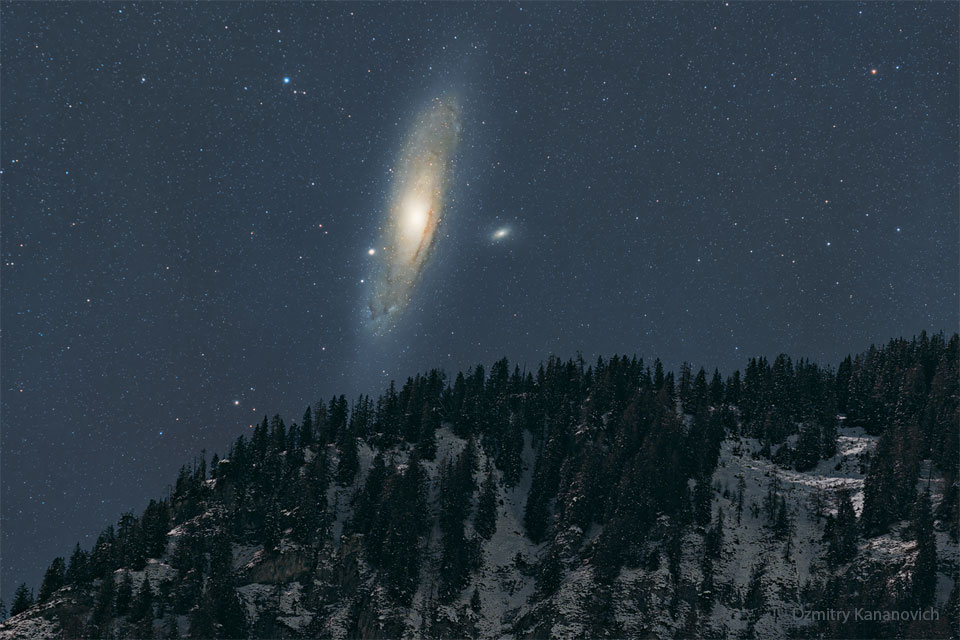NASA’s Picture of the Day presents an astounding view of the Andromeda Galaxy shining in the night sky over the stunning Alps. Captured Dzmitry Kananovich, this breathtaking image showcases the cosmic dance of galaxies, highlighting the exquisite beauty of our neighboring galactic companion set against the backdrop of the iconic Swiss mountain range.
Andromeda, also known as Messier 31 (M31), is an expansive spiral galaxy located approximately 2.5 million light-years away from Earth. Despite its faint appearance to the naked eye, this galaxy’s light has journeyed over two million years to reach us, offering a direct glimpse into the ancient past.
The featured picture, captured just as Andromeda gracefully vanished behind the Swiss Alps, reveals the galaxy’s intricate details and transforms it into a captivating celestial masterpiece. This awe-inspiring cosmic portrait stands as a testament to the power of long-duration camera exposures, providing us with a glimpse of the unseen facets of the universe.
While the image captivates with its celestial beauty, it also serves as a reminder of the vast timescales at play in the cosmos. Recent astronomical data hint at a future cosmic collision between our Milky Way Galaxy and the Andromeda Galaxy, a dramatic event that will unfold over billions of years.
In addition to its breathtaking visuals, here are some fun facts about the Andromeda Galaxy:
1. Larger than the Milky Way: With a diameter of about 220,000 light-years, the Andromeda Galaxy is larger than the Milky Way. It is the largest galaxy in our local group, which also includes the Milky Way and several other smaller galaxies.
2. Cosmic Collision on the Horizon: Scientists predict a collision between the Andromeda Galaxy and the Milky Way, which is anticipated to occur in about 4 billion years. This collision will lead to the formation of a single, larger galaxy known as “Milkomeda” or “Milkdromeda.”
3. Visible to the Naked Eye: The Andromeda Galaxy is visible to the naked eye, especially under dark skies. It has been observed since ancient times and was documented astronomers in the 10th century. It was later observed and cataloged the French astronomer Charles Messier in 1764.
This cosmic snapshot of the Andromeda Galaxy over the Alps provides a stunning view of the universe’s beauty and complexity, showcasing a compelling celestial spectacle that transcends the limits of the human eye. As we marvel at this breathtaking image, it reminds us of the boundless wonders and grandeur of the cosmos, offering a glimpse into the vastness of time and space.

